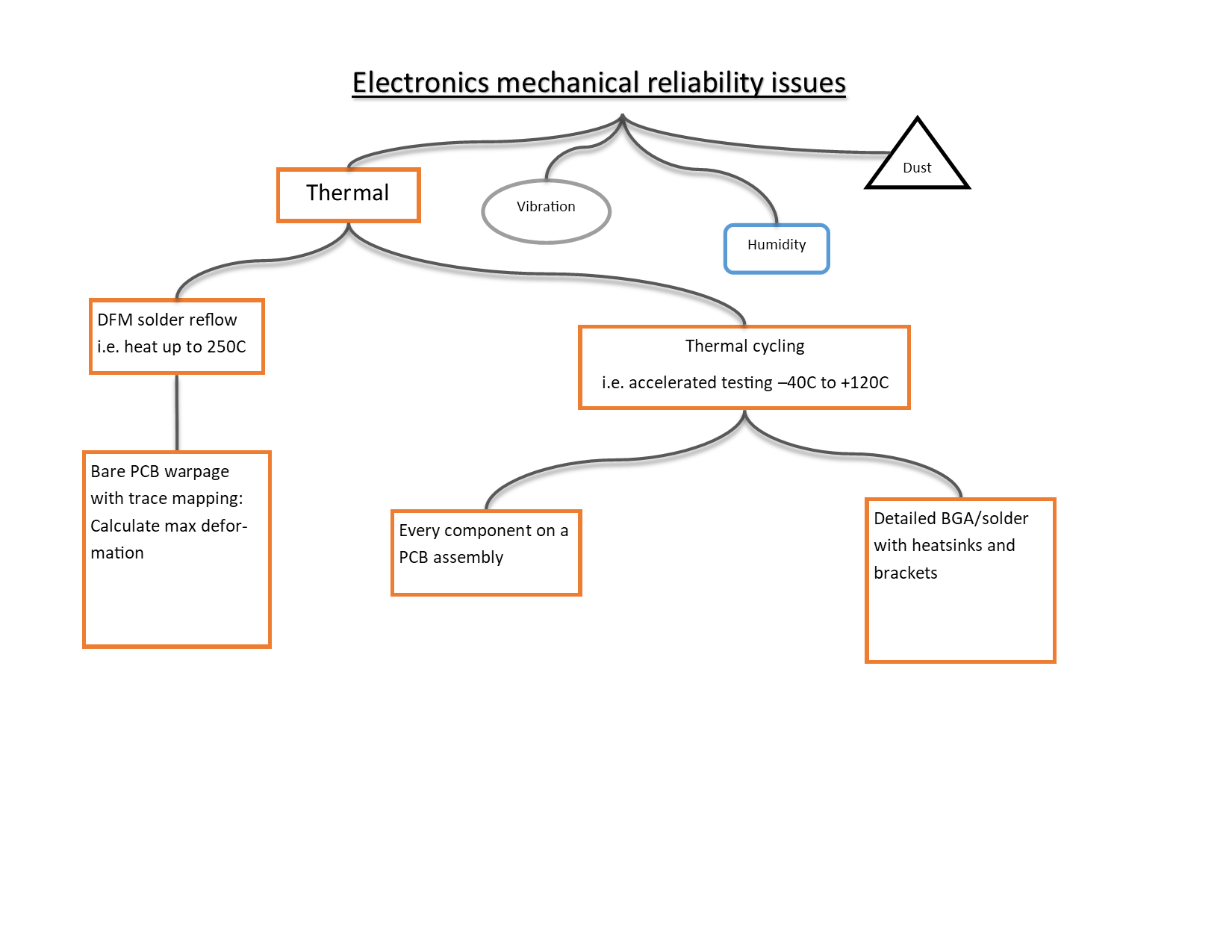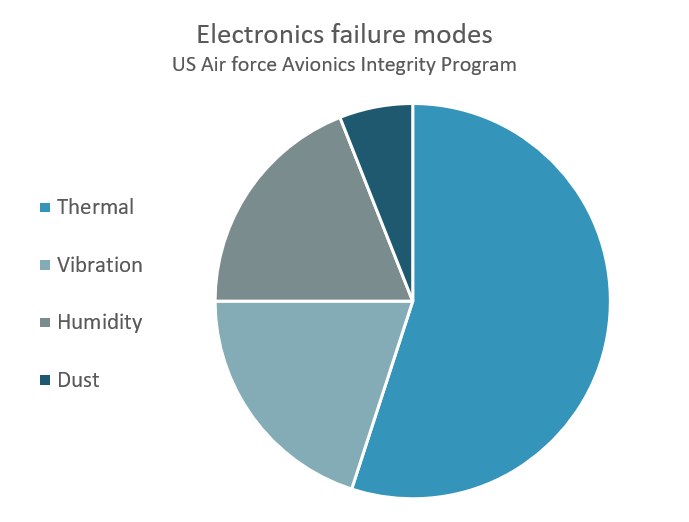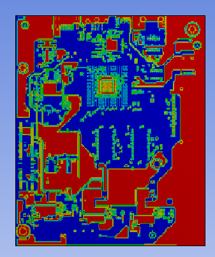TLDR: Heat can cause solder to crack. There are 2 paths for simulation: Fast rough estimates based on closed form equations or detailed, accurate FEA model of solder balls.

I started writing about electronics reliability, then I realized it is kind of a big topic. So I’ll do it in sections here.
Decades ago, the air force did a big study on avionics reliability and found heat, vibration, humidity and dust to be the leading causes of electronics failure.

Physics didn’t change much over the years and although electronics are faster and smaller, the causes of failure remains the same.
Heat and vibration were the most dominant cause. So let’s focus on heat first
Heat is bad for electronics because materials have different thermal expansion coefficients. This means when they get hot; PCB, chips and solder all try to expand by different amounts. High stress is induced in the solder and cracks occur.

Cracks get bigger over time until something breaks. Then we call it a “reliability issue”.
Warpage
When do electronics get hot? When you put them in an oven!
Most electronics need to go through an oven to melt the solder paste. It can get up to 250C in there!
At these temperatures, the PCB can bend in all kinds of interesting ways because copper and fr4 are not uniformly distributed so there is lot of push and pull that cause warpage.

Now imagine that you have 1000’s of tiny solder balls and they need to all stick to just the right spot on a PCB. In the oven it goes and the PCB becomes wavy. You are about to experience some “yield issues.”
Luckily this can be simulated early on in the design process so that you have a chance to mitigate these problems.
See these videos for more details.
The key is to capture the distribution of copper inside the PCB accurately. Then you will be able to predict the warped shape and understand the risk to reliability.

Thermal cycling
Electronics also get hot when you use them. This causes thermal expansion differences and eventually some solder connections will break… again.

IRL this can take years, but we can’t wait years to find out if our device will fail. Instead we stick it into an oven and freeze-roast it for a few weeks. This has been a problem for a long time and there are many well publicized failures over the years, so people have come up with various solutions.
The first approach is to use basic empirical equations because they can quickly scan an entire board and give you an estimate for the durability of every chip, cap and resistor. Only the size and material of the board and packages are taken into account so it’s a rough estimate.
Here is an example:
When you need to ensure that a CPU doesn’t fail early, you need a detailed BGA solder joint fatigue simulation like the one shown in the video below.
You can put in as many details as you want. Heat sinks and brackets? Sure. 50lbs of clamping preload? No problem. How about details like solder pad and solder mask? Why not?
Great results… comes with a lot of work. These models need to be set up carefully and consistently.
That’s a quick overview of what can be done in simulation for thermal reliability.
Wow! You’ve made it to the end. Remember to smash the like button and share this with your friends!

Dec 20, 2018 10:04:56 AM
